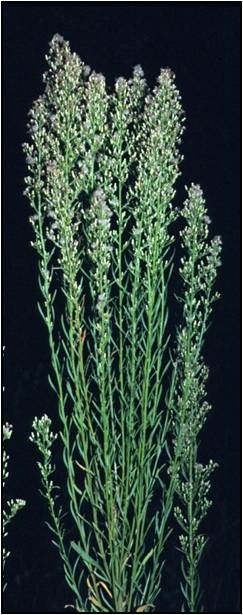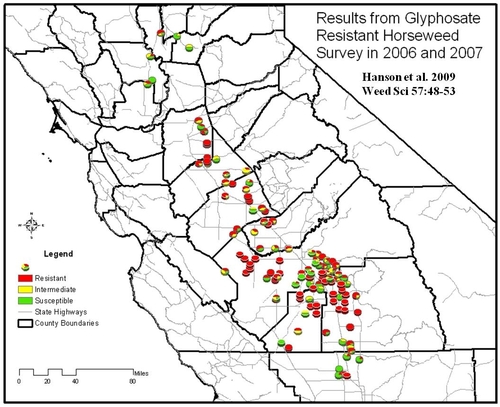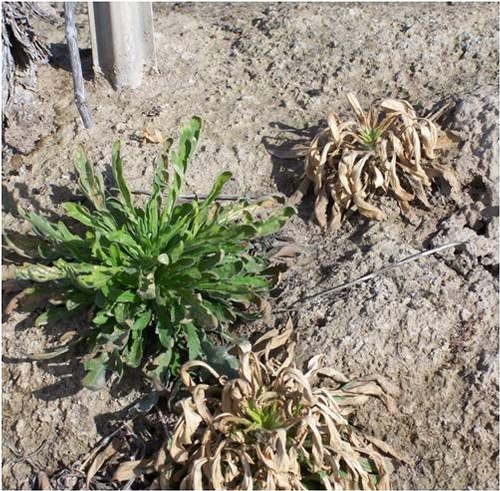Dec 27, 2010

In 2006 and 2007, we conducted research to determine the magnitude of the glyphosate-resistant horseweed problem in the Central Valley. The sampling was focused at that time in the Fresno area but included sampling as far south as Wasco and as far north as Marysville. We published the results of the initial project in 2009 (Weed Science 57:48-53) but the work has also led to several related projects which are ongoing.
In general, we found that:
1. Glyphosate-resistant horseweed was already widely spread throughout the Central Valley. Most sites we sampled had at least some resistant individuals.
2. On average, it took nearly five times more glyphosate to impact the resistant biotype compared to the susceptible biotype (on a target enzyme activity basis).
3. We found few correlations between land use (nearby crops) and resistance ratios. We presume that the wide seed dispersal by wind as well as the common use of glyphosate on roadsides, canal banks, and other non-crop areas may have masked any direct effects of in-crop glyphosate use.
4. During the survey, we noted the widespread occurance of horseweed in the San Joaquin Valley (especially in the tree fruit and raisin areas around Fresno) but have since noted that the weed is becoming more important in other areas of the state. This has been particularly noticable in perennial cropping systems that use a glyphosate-only weed control program.


A number of researchers are conducting research on glyphosate resistant weeds in California ranging from biology/phenology to alternative control tactics to genetic mechanisms in horseweed and other herbicide resistant weed biotypes. Since this is currently an important research area (in my lab and in the state), I'm sure we will revisit the topic of resistant weeds on a regular basis.
Take care,
Brad